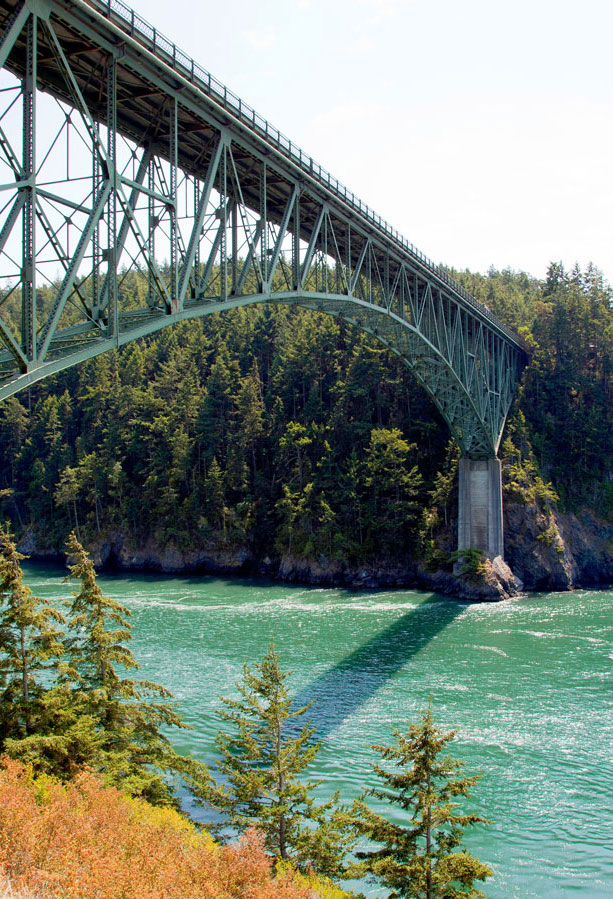With its rugged coastlines, soaring mountains, and old-growth forests, the Pacific Northwest (PNW) is famous for its remarkable natural beauty. But the PNW’s diverse landscapes aren’t the only draw — this region (which includes the states of Idaho, Oregon, and Washington) is filled with fascinating history. From the oldest courthouse in the West to a ship that once served as a floating lighthouse, here are seven historical sites you shouldn’t miss the next time you’re in the Pacific Northwest.
Pioneer Courthouse – Portland, Oregon
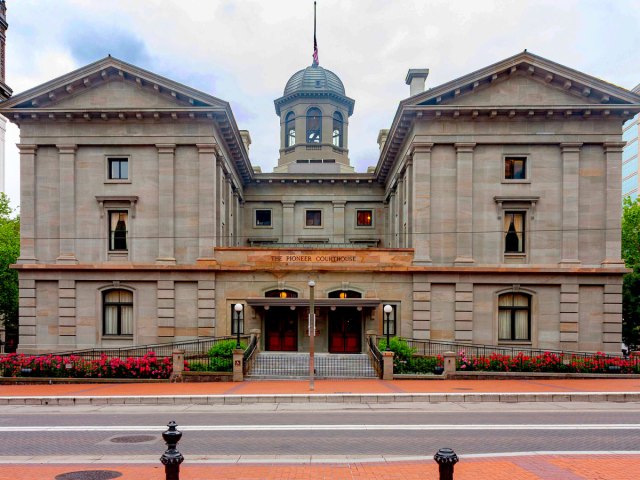
Downtown Portland’s Pioneer Courthouse is the oldest standing federal building in the Pacific Northwest. Completed in 1875 at a cost of $396,500 (equivalent to over $11 million today), the impressive Italianate-style building occupies a full city block. At one point, the courthouse was scheduled to be demolished — fortunately, it has since become a National Historic Landmark.
Today, the historic courthouse is situated across from the Pioneer Courthouse Square, a 40,000-square-foot park affectionately known as “Portland’s Living Room.” Although the courthouse has undergone several rehabilitations since it was first built, the building still retains original architectural details, such as the grand stairway in the lobby and decorative plaster molding.
Fort Nisqually Living History Museum – DuPont, Washington
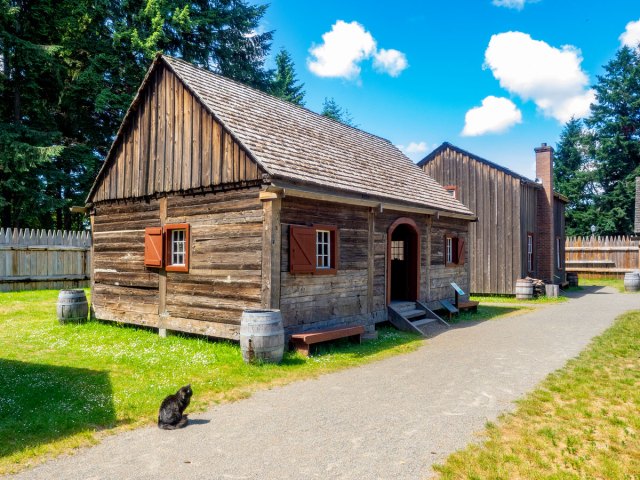
The Fort Nisqually Living History Museum takes visitors back to life in the Pacific Northwest during the mid-19th century. The museum is a restoration of the first European settlement in Washington state, which was established as a British fur trading post in 1833 by the Hudson’s Bay Company. The fort was once a thriving business center and meeting place for colonial settlers, merchants, and the Indigenous peoples of the region.
Today, the Living History Museum allows visitors to experience territory life during the 1800s with daily tours, hands-on exhibits, and specialty workshops. With staff dressed in period clothing and live demonstrations of 19th-century crafts, the museum is dedicated to showcasing Fort Nisqually’s diverse history.
Burial Site of Chief Seattle – Suquamish, Washington
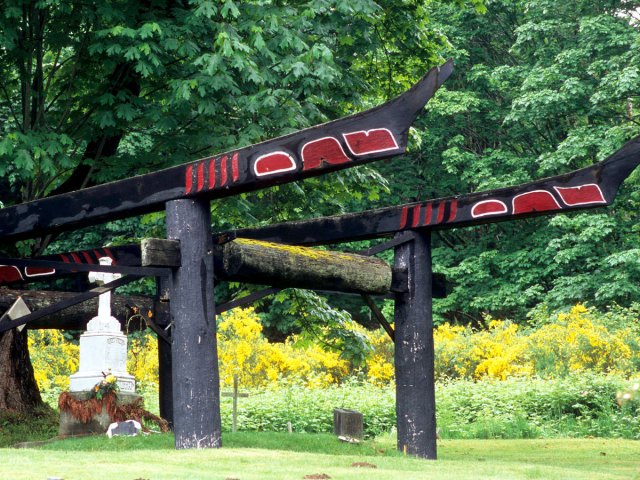
The only major U.S. city named for a Native American, Seattle’s appellation is derived from Chief Si’ahl, the leader of the Suquamish and Duwamish people in the 1800s. Known to settlers as “Chief Seattle,” Si’ahl was a compelling orator who worked to ensure the Indigenous cultures coexisted peacefully with European settlers.
Today, his burial site can be visited in the town of Suquamish on the Kitsap Peninsula, reachable via a ferry from the Bainbridge Island Ferry Terminal in Seattle. A Catholic convert, Chief Seattle is buried behind St. Peter’s Catholic Mission, on what has now been designated as Suquamish land. To learn more about the region’s Indigenous culture, stop by the Suquamish Museum before walking to the gravesite, which is honored by the Suquamish Tribe every third week in August during Chief Seattle Days.
Jacksonville Historic District – Jacksonville, Oregon
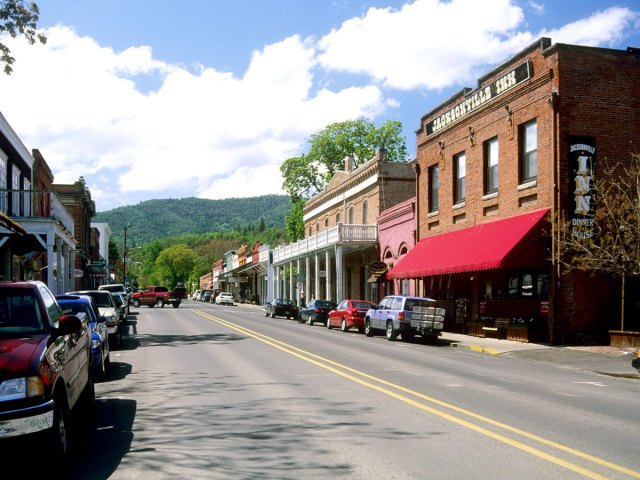
After gold was discovered in southwestern Oregon’s Rich Gulch in 1851, miners flocked to the area with hopes of striking it rich. Westward settlers were also drawn to Oregon with the promise of free land, and before long the boom town of Jacksonville sprung up, eventually growing into one of the territory’s largest cities.
Today, the entire town of Jacksonville has been designated as a National Historic Landmark. Ride on the Trolley Tour to learn about Jacksonville’s humble beginnings as a mining camp and to see the many historic homes built during the 18th and 19th centuries. To explore Jacksonville on foot, the Haunted History Tour highlights the town’s most historic buildings, while also sharing stories of the spirits who supposedly haunt them.
Point Wilson Lighthouse and Fort Worden Historical Park – Port Townsend, Washington

Situated on the tip of a peninsula in Port Townsend, the Point Wilson Lighthouse was built in 1914 to mark the entrance to the Admiralty Inlet. At 51 feet in height, it is the tallest beacon on Puget Sound. The lighthouse is still in operation today, serving as an important navigational aid that guides ships on the Sound and the Strait of Juan de Fuca.
The lighthouse is located within Fort Worden Historical Park, itself a historical gem on Puget Sound. The former military base is home to wide lawns, artillery bunkers, and centuries-old Victorian homes that once housed officers. Overnight camping is permitted on the park’s beach, while more comfortable accommodations can be booked in one of the park’s 36 historic house rentals.
Lightship Columbia – Astoria, Oregon

Located within the Columbia River Maritime Museum, the Lightship Columbia is an incredible piece of Oregon’s maritime history. For 28 years, the ship functioned as a floating lighthouse on the mouth of the Columbia River. The ship was home to a crew of 17 men who helped to guide other ships along the dangerous passageway. Today’s visitors are allowed to climb aboard the historic ship to learn how the crew lived and worked on the vessel between 1951 and 1979.
The museum’s other exhibits include a 3-D theater, a full-sized fishing trawler, and a pond for launching model boats. A highlight is the exhibit on the Columbia River Bar, considered to be one of the most treacherous passages in the world, where approximately 2,000 ships have been sunk since 1792.
Deception Pass Bridge – Oak Harbour, Washington
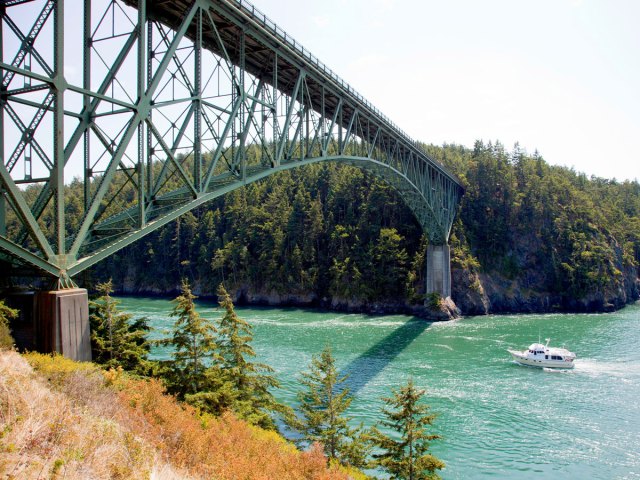
The narrow waterway that connects the Strait of Juan de Fuca and Skagit Bay is known as Deception Pass — named from the deceptively swift and dangerous tidal currents that run between Whidbey and Fidalgo Islands. The bridge above the pass was built by the state of Washington as part of the Civilian Conservation Corps, a Depression-era public works program.
On the day Deception Pass Bridge opened in 1935, approximately 700 cars traveled on it. Today, 20,000 cars journey over the bridge daily, often through the thick fog for which the Pacific Northwest is known. Those who cross the 180-foot-high bridge are treated to unparalleled views of the rocky headlands and the surrounding state park. Foot traffic is also permitted on the bridge, with tours which aim to explore the region’s exceptional beauty and impressive history.
More from our network
Daily Passport is part of Inbox Studio, which publishes content that uplifts, informs, and inspires.






